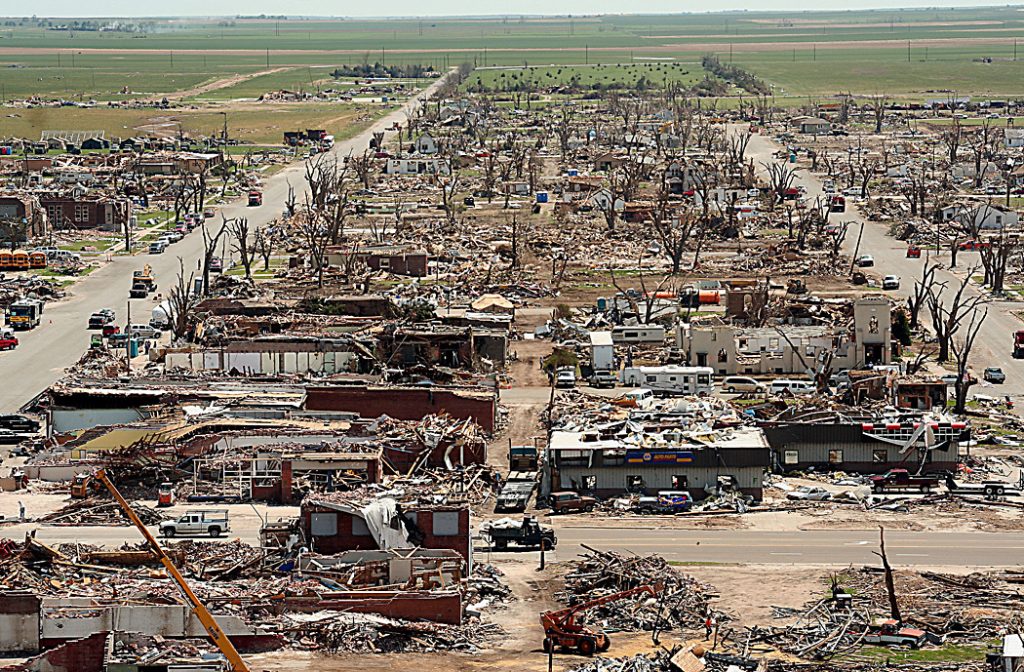
In 2007, a fierce tornado wiped the city of Greensburg, Kansas, clean off of the map, causing an estimated $250 million in damages and destroying 95 percent of the town. Following the disaster, Greensburg engaged in an ambitious rebuilding effort that would gain national recognition for the town of 740 people—they resolved to meet some of the highest sustainability accreditations in their new developments.
Now, 15 years later, the city contains the most LEED (Leadership in Energy and Environmental Design) buildings per capita in the U.S., runs entirely on wind energy, and uses LED streetlights exclusviely—the first U.S. city to do so.
So how did the city of Greensburg manage to not only adapt, but also thrive in the face of crisis? What lessons can we draw about strengthening our own communities in the wake of current global crises?
In the past, I’ve covered the concept of “placemaking,” namely—community-driven initiatives to reclaim ownership of the places where people live and improve the quality of life. Greensburg is an excellent example of a community uniting to engage in placemaking. In a 2016 interview with the podcast Placemakers, former Greensburg city administrator Steve Hewitt explained how many of Greensburg’s residents were devout Christians. Hewitt shared that by connecting to their value system, especially with regard to stewardship and conservation, he could make a case for sustainable development and unify Greensburg around this common goal.
As Greensburg demonstrates, placemaking can be a healthy response to community adversity, but it must be done with consideration for the values and goals of community members. Greensburg is small, with a relatively homogenous population, but diversity in a community is no deterrent to placemaking—in fact, quite the opposite. Placemaking is most sustainable when all community members are included in the process.
Social Capital
So how does placemaking improve a community’s resilience to crisis? To answer this question, it is helpful to understand the concept of “social capital,” the value that society derives from high-quality interpersonal relationships. Social capital can be found in the qualities that are crucial to group functioning, such as trust, altruism, and support networks. Social capital, and all its benefits, can be cultivated through the types of placemaking that enhance a community’s connectedness.
The presence of social capital is not trivial. In his most famous book, Bowling Alone, Dr. Robert Putnam explains that despite its importance, social capital has been in steep decline since the 1970s, as measured by civic participation, union numbers, work and social networks, mutual trust, and more. This could have tangible implications. Finding the “American Dream” in rural America, a 2017 article on Brookings.edu, found a strong correlation between social capital and upward economic mobility in the regions studied. Trust is also widely considered to be one of the most crucial factors in economic prosperity among researchers in the field. Lack of social capital, and the settings that cultivate it, likely also contributes to political polarization, since it leads to isolation from other viewpoints and detachment from local communities. One doesn’t need to look far to see the real world implications of sparse social capital. Perhaps safety protocols during the COVID pandemic wouldn’t have met with as much reluctance in the U.S. if some possessed more consideration for the health and well-being of those around them.
Placemaking
Since the mid-20th century, we have become increasingly disconnected from the many places we inhabit. We have lost a sense of affiliation and ownership with our cities, and we have suffered the consequences. In turbulent times like these, placemaking can serve a vital role through replenishing our social capital and making our communities resilient in the process.
Everyone possesses the capacity for placemaking, and we all have irreplaceable value to help our communities grow in connectedness. Trust, altruism, skill-sharing, and connectedness have all been crucial to our survival as a species; we must develop the social capital at the heart of our communities with bottom-up placemaking solutions. By doing so, we can accomplish what the town of Greensburg, Kansas, did—bounce back from crisis into something even greater than previously imagined.
Opportunities
The beauty of placemaking is that it is purely voluntary and everyone can get involved. Here in Fairfield, where I live, the activities of the Fairfield Economic Development Association, Chamber of Commerce, Sierra Club, Rotary, Sustainable Living Coalition, Habitat for Humanity, and many others all contribute to community vitality. Figure out what area of your community stokes your passion and get involved!
